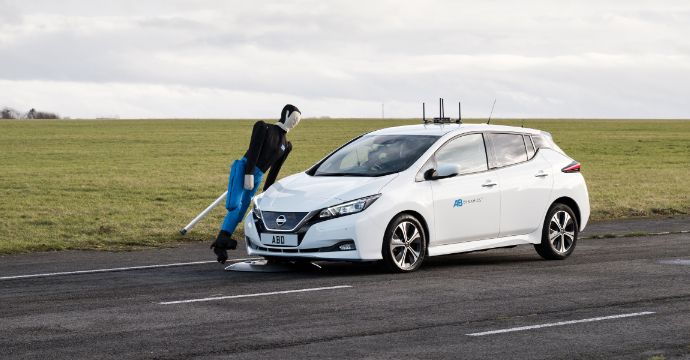
AB Dynamics and DRI have launched a next-generation pedestrian target used for ADAS testing, the Soft Pedestrian 360™. DRI developed it to provide greater realism, durability and reduce vehicle damage.
To enhance realism the Soft Pedestrian 360 features sophisticated articulation of the knee, hip, shoulder and neck. Its gait can automatically synchronise with the platform carrying it. Known as Step-n-sync, it prevents the “Flintstoning” phenomenon, where the foot in the stance portion of the gait is not stationary relative to the ground and results in better characterisation.
Joseph Kelly, Chief Engineer at DRI said:
Properly representing the stance phase of the gait, when the foot is stationary relative to the ground, can be a critical factor in an automatic emergency braking (AEB) system’s categorisation of the target as a pedestrian. Without this attribute, an AEB system could miscategorise the target as something other than a pedestrian and react differently. The team at DRI researched gait characteristics to identify and recreate the correct knee and hip articulation angles as functions of percent of gait cycle.
The key to reducing the potential for damage to the test vehicle are the target’s compliance, the minimisation of external hardpoints and the modularity of the design, which reduces the mass of any individual component that could contact the test vehicle and cause damage. The limbs, head and mounting pole attach to the torso via foam blocks that engage corresponding sockets in the torso, such that when these components separate on impact, there are no exposed hard points.
Kelly said: “Damage to the vehicle under test caused by targets can be a substantial contributor to the total cost of testing ADAS technologies. It isn’t just the damage to the test vehicle but also lost track and engineering time waiting for repairs that substantially increase the cost of testing. For example, if a windshield is damaged, camera systems located behind it often require recalibration, which is time-consuming and costly."
